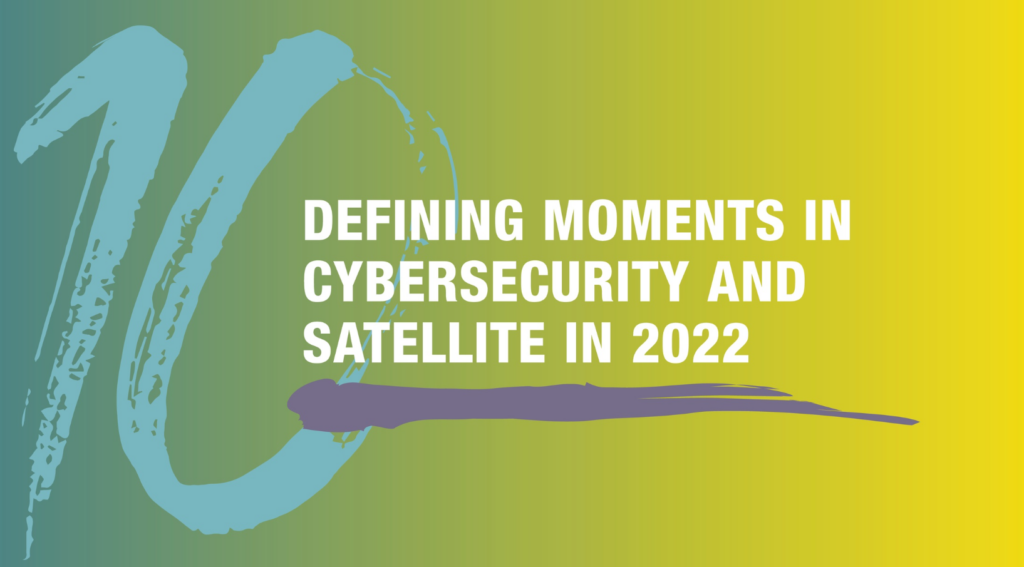
Being new to cybersecurity, I know little beyond the cyber ghost stories told by poplar media. I wanted to take a broad look at the field before jumping on a particular news item. Googling led me to ViaSatellite’s “Defining Moments in Cybersecurity and Satellite in 2022”. A “Best of” list focused on Cybersecurity and satellites, seemed like a good starting point.
The article covers the moments 5W’s with enough detail to easy guide follow-on searches for additonal information. In summary, the events fall into three broad categories: Cyber Hacks and Attacks, PolicyEfforts, and Cyber Environmental Changes. Taken together the moments do a good job of showing the scope and breadth of the field along with defining possible future trends.
Cyber Hacks and Attacks
– Russian cyber operations in the Ukraine: ViaSat saw a deliberate attack on its KA-SAT network in February 2022, which affected modems across and Europe. The attack moved the scenario from what could be to what is.
– Inexpensive Hack for Starlink’s new network: Lennert Wouters, a cybersecurity expert from KU Leuven University in Belgium showed it was possible to hack a Starlink satellite dish. He showcased his findings at BlackHat in Las Vegas last year, and he revealed it cost him just $25 to acquire the parts to do it.
– Uber Hack: Lapsus$, a threat group made up primarily of teenagers in the U.K. that excels at social engineering, including using social engineering to circumvent multifactor authentication (MFA). Motivated by ego, in addition to money, they allowed the details of their attack on Uber to play out on the public stage.
– FancyBear: A Russian military group known as Fancy Bear, (or APT28) has been suspected of infiltrating U.S. government networks. Researchers discovered suspected Russian hackers hiding inside a U.S. satellite network; sounding alarm bells about U.S. adversaries and their activities to infiltrate and disrupt the rapidly expanding space economy.
Policy Efforts
– DoD Zero Trust Framework – The new Zero Trust framework is a critical part of the shift from perimeter-based defenses to a proactive model that embeds security throughout the network. Satellite networks in particular have relied on the assumption that traffic inside a boundary was legitimate, rather than re-validating at each step along the way.
– Cyber Security Preparedness Act: This act encourages the federal government to adopt technology that is protected from decryption by quantum computing. The act will attempt to prevent the use of store now and quantum decrypt later methods by adversaries.
Changes to the Cyber Environment
– Rise of Nation State: 2022 was the year the nation-state cyber actor gained in prominence, and ushered in a new era of cybersecurity. Recently nation states are trying to demonstrate their strong cyber posture — not necessarily as a deterrent, but as a show of strength and capability.
– CyberLeo and CyberSatGov: Large draw events that brought stakeholders together, fostering community, and helping provide vital intelligence to satellite companies as they look to build a secure future. A possible counter to off-set the rise of nation-state actors.
– Programming Languages: Threat actors’ use of novel programming languages to create malware that will evade detection. Defenses will need to identify ways to adjust nimbly to a wide and growing number of programming languages for malware.
– ChatGPT: OpenAI’s introduction of powerful AI chatbot that is focused on understanding and responding to text inputs. OpenAI’s GPT-3 technology, allows anyone with internet access to leverage a powerful conversational AI capability.